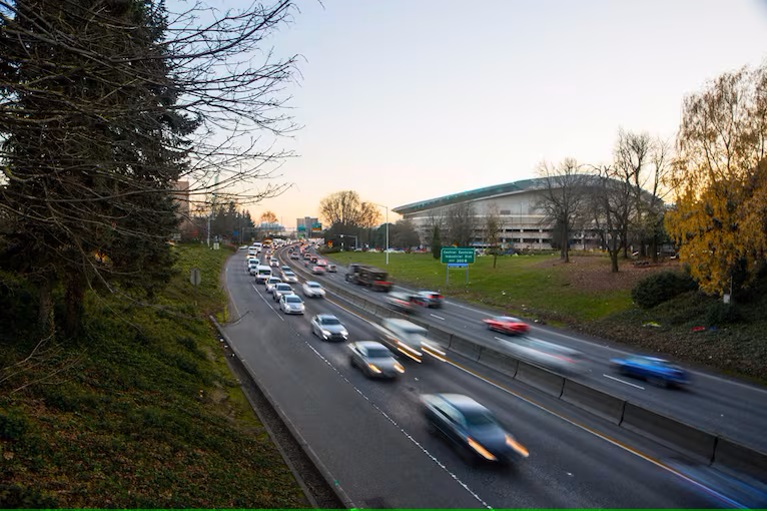Capitol Chatter: 7 takeaways from Oregon’s economic outlook
Published 5:00 pm Thursday, August 26, 2021

- Capital Chatter square logo
By Dick Hughes
For Oregon Capital Insider
Trending
A well-deserved tax cut! Some Oregonians will get more than $100,000 back in a tax rebate next year.
Unfair! The richest Oregonians will reap a rebate windfall next year.
Ah, the dueling narratives of whether Oregon’s unique income tax “kicker” is good, bad or … what?
This week’s headlines about next year’s kicker rebate focused on its size — up to a few hundred dollars for many of us, a whole lot more for the wealthiest among us. But that was only a fraction of what state economists had to say about where Oregon is headed.
Here are seven takeaways from the quarterly economic and revenue forecasts, which State Economist Mark McMullen and senior economist Josh Lehner presented to the Legislature’s tax committees on Wednesday.
1. Overall, Oregon’s economy is doing well, especially compared with the slow recovery that followed previous recessions, but thousands of jobs have yet to return.
Trending
Despite renewed concerns about COVID-19, McMullen said there’s been no discussion of re-imposing health restrictions on businesses. However, if business shutdowns recur, the economic impact will be much worse than earlier in the pandemic.
Billions of federal dollars bailed out Oregonians — and the state budget through the resulting income taxes – via unemployment benefits, stimulus payments and other coronavirus relief programs. There’s no talk of the feds stepping in again.
The Oregon Employment Department also is not expecting renewed business shutdowns and the resulting deluge of new unemployment claims. But, Acting Director David Gerstenfeld said this week, the department is watching and planning just in case.
Pandemic jobless benefits will expire Sept. 4 for as many as 81,000 individuals, potentially ending payments for two-thirds of folks on unemployment. And for those filing new claims under regular unemployment, the “waiting week” for receiving benefits will resume.
2. The potential availability of those 81,000 individuals won’t solve Oregon’s labor shortage. Based on what has happened in other states, many will survive on savings for now. The pandemic and working from home led to a national soul-searching about how people view their jobs and whether working long hours or having a two-income household is worth it.
Amid the competition for workers, Oregon employers are raising pay and offering other incentives. Average wages are 10% higher than before the pandemic, but the income disparity among Oregonians has widened.
In their report, the economists wrote: “Consumer demand is strong given household incomes. Firms are looking to staff up as quickly as possible, and wages are rising quite quickly as they try to attract and retain workers in today’s tight labor market. Looking forward, it is hard to see how labor supply will remain depressed indefinitely.”
Oregon will create a record number of jobs this year, the number of job seekers gradually will increase, but labor supply will remain a major constraint on economic growth. Even before the pandemic, half the job vacancies in Oregon were difficult to fill.
One factor is that Oregon traditionally relied on newcomers to expand the labor force. However, the state’s population growth has slowed to less than 1% annually, so employers would be wise to consider alternatives.
The economists wrote: “Specifically, what would Oregon’s long-run labor supply look like if we closed the educational attainment gap between white, non-Hispanic Oregonians and communities of color? How many more workers could local businesses hire if employment rates across all segments of the population were at their historical maximum? What if women were hired at the same rate as men?”
3. Overcoming that gender gap would substantially boost the economy, but childcare availability, affordability and flexibility remain a significant barrier.
“If we could address our childcare disparities and childcare deserts and the like, that would really move the needle because we’re talking about half the population,” Lehner told legislators. “Of course, the policy here wouldn’t be, ‘We need to hire more women.’ The policy here would be, ‘We need to address some of these barriers to employment so that people can work if they wanted to.’”
4. Productivity per Oregon worker has increased 8% during the pandemic. “Much of these gains have been forced onto firms where they must try [to] make do with what they have,” the economists wrote.
5. Rural Oregon generally is recovering faster than big cities, which is the reverse of most recessions.
Business travel remains down, many people are working from home instead of commuting into downtowns, and people remain cautious about attending urban activities and events.
“The wildcard in terms of downtown Portland and job centers more broadly remains working from home. Ultimately where that lands, be it a couple days a week versus fully remote, will go a long way to determining the impact on commercial real estate,” the economists wrote.
6. The state’s tax coffers are overflowing, and the 2021 Legislature made only small changes in tax policy. General Fund revenues have almost doubled to $24 billion in the past decade – basically from the end of Gov. Ted Kulongoski’s term to today.
That tax growth will slow as retiring baby boomers work less and spend less. The Legislature could consider diversifying its tax structure to bring in more. Oregon already has been upping its various consumption taxes – that is, sales taxes but not by that name.
“The Legislature has gone a long way toward diversifying our tax base in the last few years,” McMullen told lawmakers. “We’re really expanding in terms of these consumer-style taxes.”
7. Back to the kicker: Budgets would be even bigger if the state had not returned $2.6 billion in kicker rebates during the past decade.
That was the goal when the Legislature developed the kicker in 1979: restrain state budgets from growing too big. In that sense, the kicker does its job. However, it failed in its overall goal: deter California’s tax revolt from taking over Oregon.
Polls consistently show Oregonians love the kicker, which is why voters in 2000 enshrined it in the state constitution.
The kicker is based on a nearly impossible challenge for economists: predicting future revenues within 2% accuracy. The Oregon Department of Revenue describes the kicker this way: “The kicker occurs if actual state revenues exceed forecasted revenues by 2 percent or more over the two-year budget cycle. The excess, including the 2 percent trigger amount, is returned to taxpayers through a credit on their following year’s tax return.”
The current estimated kicker, which will be finalized by Oct. 1, is that Oregonians will get a credit next year equal to 17.5% of what they would pay for 2020 personal income taxes.
That means the bottom fifth of Oregonians, those with a taxable income under $12,100, could get a typical kicker of $30. The top 1%, with incomes above $442,7000, will average a kicker of $16,880. For the even-wealthier among the 1%, some rebates will top $100,000.
The more you pay in taxes, the more you get back.
Is that fair? Depends on whom you ask. And that is why some legislators want to cap the rebates but stop short of killing the kicker.
“Pandemic jobless benefits will expire Sept. 4 for as many as 81,000 individuals, potentially ending payments for two-thirds of folks on unemployment.”





